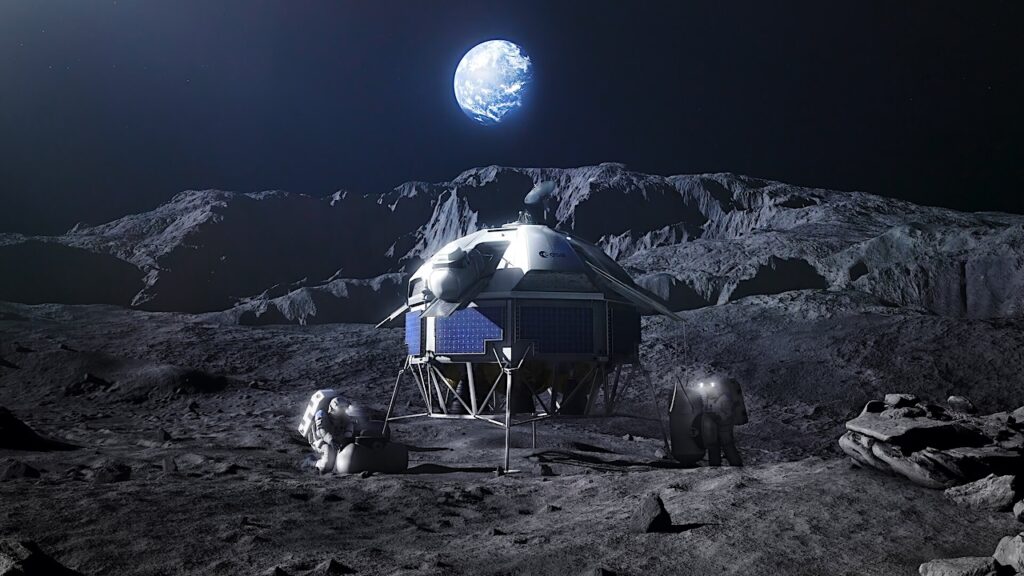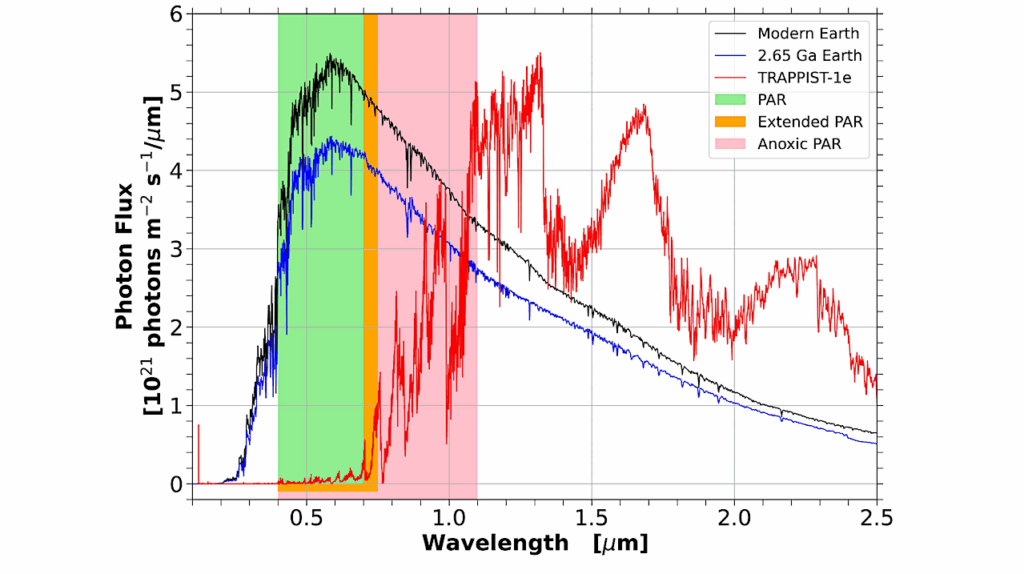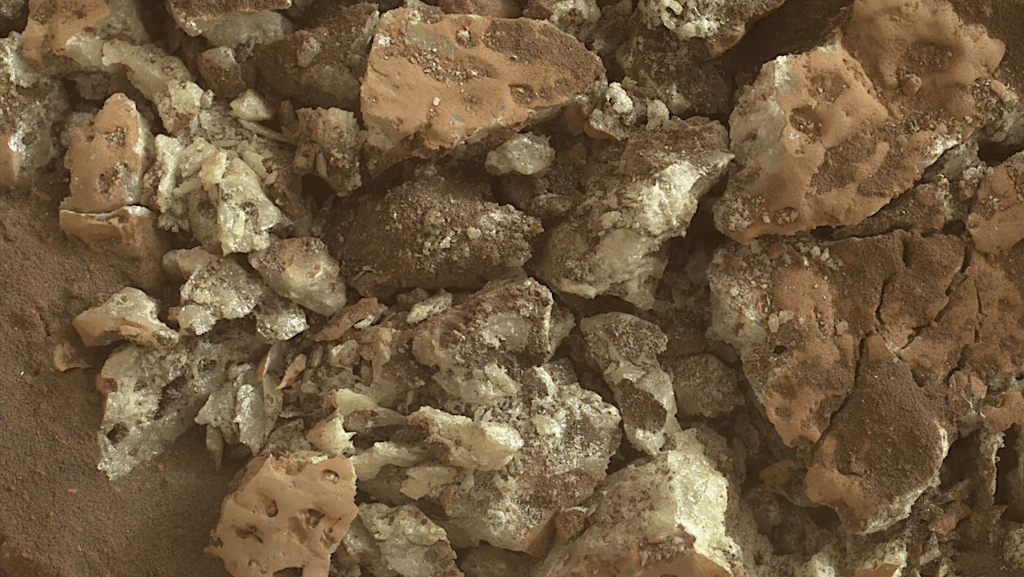Effect Of A Giant Meteorite Impact On Paleoarchean Surface Environments And Life

Large meteorite impacts must have strongly affected the habitability of the early Earth. Rocks of the Archean Eon record at least 16 major impact events, involving bolides larger than 10 km in diameter. These impacts probably had severe, albeit temporary, consequences for surface environments. However, their effect on early life is not well understood.
Here, we analyze the sedimentology, petrography, and carbon isotope geochemistry of sedimentary rocks across the S2 impact event (37 to 58 km carbonaceous chondrite) forming part of the 3.26 Ga Fig Tree Group, South Africa, to evaluate its environmental effects and biological consequences.
The impact initiated 1) a giant tsunami that mixed Fe2+-rich deep waters into the Fe2+-poor shallow waters and washed debris into coastal areas, 2) heating that caused partial evaporation of surface ocean waters and likely a short-term increase in weathering and erosion on land, and 3) injection of P from vaporization of the S2 bolide.
Strata immediately above the S2 impact event contain abundant siderites, which are associated with organic matter and exhibit light and variable δ13Ccarb values. This is consistent with microbial iron cycling in the wake of the impact event.
Thus, the S2 impact likely had regional, if not global, positive and negative effects on life. The tsunami, atmospheric heating, and darkness would likely have decimated phototrophic microbes in the shallow water column.
However, the biosphere likely recovered rapidly, and, in the medium term, the increase in nutrients and iron likely facilitated microbial blooms, especially of iron-cycling microbes.
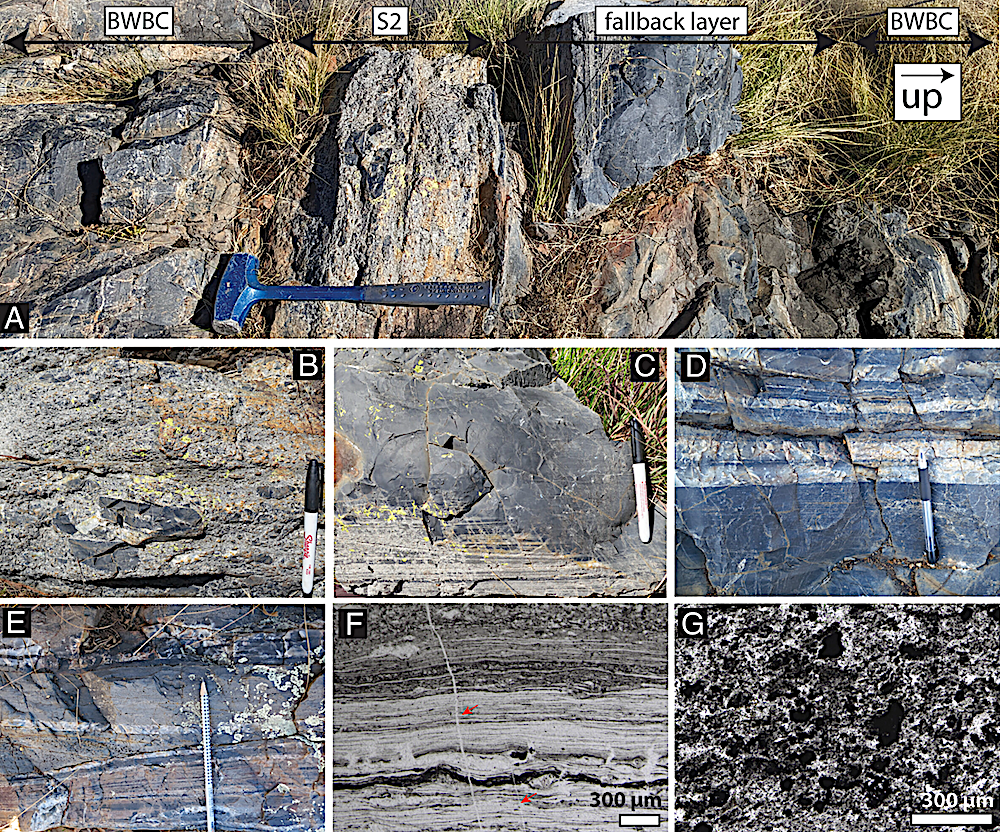
Rock and thin section images of the Bruce’s Hill and Umbaumba sections. (A–C) Outcrop photos of the Umbaumba section. (A) Overview of the Umbaumba section showing, from base to top, BWBC, S2, fallback layer, and BWBC. (B) S2 spherule bed. (C) Lower part of the fallback layer showing fine laminations. This black chert is composed of silicified carbonaceous matter, siliciclastic debris, and impact-generated dust settling out of the atmosphere. (D and E) Outcrop photos of the Bruce’s Hill section. (D) BWBC below S2. (E) Alternating siliciclastic and siderite-rich chert beds. (F–G) Representative thin section images of carbonaceous matter. (F) Laminated carbonaceous chert below S2 in the Umbaumba section (SI Appendix, Fig. S4). Red arrows indicate fractures filled by chert. (G) Clots of carbonaceous matter and other siliciclastic debris from the fallback later in the Umbaumba section. — PNAS
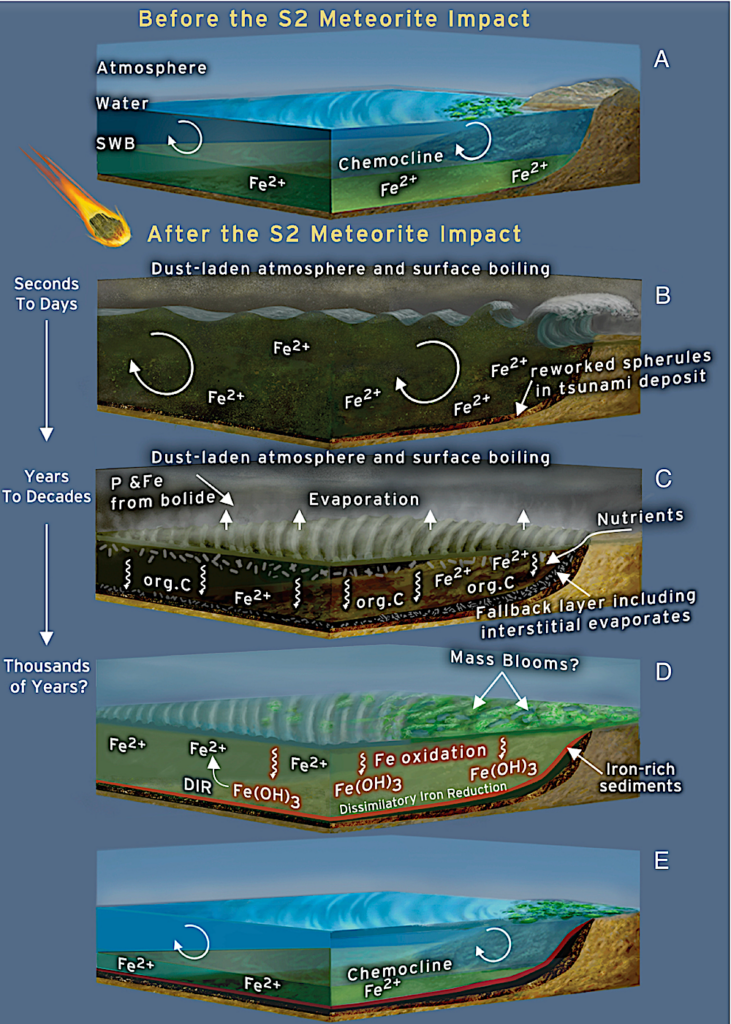
Schematic representation of possible effects of the impact on environments and life. (A) Environment prior to the impact. Water column is defined by a Fe2+-enriched deep and Fe2+-depleted shallow water column. Life (represented by green patches) was active, but likely less productive than today. (B) The impact initiated a large tsunami that swept across the globe. In the process, it ripped up the sea floor, mixed the water column, and caused turbid waters. The emission of dust and particles into the atmosphere by the impact caused global darkness, which may have lasted years to decades. (C) Impact heating reaches its peak, causing partial ocean evaporation oceans, the precipitation of evaporite minerals within the water column and the sediment, and an increase in weathering and erosion of exposed landmass. This would have lasted for up to a few years (2). (D) Once the dust had settled and the water rained back into the oceans, conditions may have been beneficial to life. P and Fe concentrations increased due to contributions from the bolide itself, an increase in weathering and erosion, and mixing of Fe-rich deep waters into shallow water. Especially Fe-based metabolisms may have benefited from the increase in Fe in the shallow water column. (E) The environment returns to preimpact background values until the next impact. DIR = dissimilatory iron reduction, org. C = organic carbon; Fe(OH)3 = iron oxyhydroxides. — PNAS
Effect of a giant meteorite impact on Paleoarchean surface environments and life, PNAS (open access)
Astrobiology


